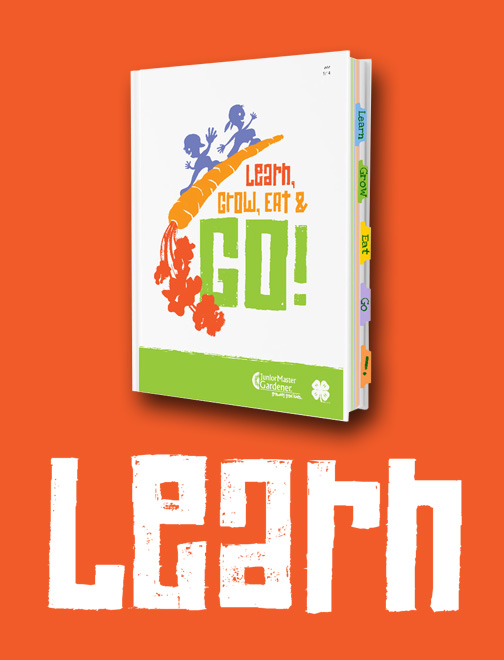

Support your class’s 10 week, teacher-created curriculum project.
Through a linear set of academically-rich, proven lessons, students will love learning about plants, what they need, how plants provide for our needs and how a class can work together to provide for the garden.
The week-by-week resources listed below will support you and your students completion of the 10 weeks/2 lessons per week unit of study.
You can also register you class for free by clicking the link below. This allows JMG to know you are using the curriculum and we can better support your efforts!
Teacher Resources for Use with Students Using
LGEG Virtual Course
The Resources below are for use when teaching with students enrolled in the Virtual Learn, Grow, Eat & GO! Course.
These resources are currently under development with each new weekly “check-in” resources rolling out every Monday beginning Sept.7!

- 1A. Know and Show Sombrero
- How many of you were able build a Know & Show Sombrero?
- Who can tell me what the items on your hat represent? What are the P.L.A.N.T.S. needs?
- Why is it important for us to know what plants need?
- When I count to 3, everyone put on your hat so I can take a class sombrero screen shot!
- 1B. 5 Senses Food
- Who can name all 5 senses?
- Which sense do you use to eat with?
- Raise your and if you were able to be a scientist and fairly give your carrot a grade on each of your 5 senses?
- I’m going to call on a few of you to tell us your adjectives/describing words of your favorite foods and we’ll try to guess that food before you tell us! Who wants to go first?
> TEACHERS, you are invited to post your class’s Know & Show Sombrero
screen shot on social media and include #LearnGrowEatGo!

2A. Plant Parts We Eat
-
- Raise your hand if you were able to read or watch the Tops & Bottoms book. Who can tell me how the rabbit tricked the bear?
- Name all 6 main plant parts. Which of those parts are edible?
- What is the job of the leaves of the plant? What is the job of the leaves of the plant?
- Is a tomato a fruit or a vegetable?
2B. Nutrients to Grow
-
- We learned about lots of different nutrients our bodies need.Who can name a nutrient that gives our bodies energy?
- Which nutrient comes from beans, nuts, seeds and meat and helps our wounds heal?
- What did this lesson tell us is the most important nutrient?
- I need 2 volunteers – who can share their poster or presentation that teaches about their nutrients?

3A. Don’t Crowd Me
-
- What 2 groups of plants were growing too closely together in the class video we watched of students pretending to be plants?
- How can we be sure the plants we plant will have enough space to grow?
- Where can we find that info on how much space plants need to grow?
- Do plants really feel crowded? Even if they can’t feel crowded, what problems does being crowded cause
3B. Paper Towel Gardening
-
- What is a paper towel garden? Why do we glue seeds to paper towels?
- Name 2 vegetables can be planted with 16 seeds in one paper towel?
- Everybody get ready to show me your paper towel garden you made. When I count to 3, everyone hold up your paper towel garden so I can take a class sombrero screen shot!
- Who used carrot seeds in their paper towel garden? What are other vegetable seeds anyone used? In a lesson next week we’ll learn where we should plant it!
> TEACHERS, you are invited to post class screenshot of your students holding up their Paper Towel Gardens and include #LearnGrowEatGo!

- 4A. Home Sweet Home
- We hope everyone can start a garden at your home. Even a single pot full of soil could be a great garden for growing a carrot garden but how many hours of sunlight do all vegetable plants need?
- Help me finish my sentence. A good location for a garden should also _____________.
- What was wrong with the shade tree locations for possible vegetable gardens?
- Raise your hand if you completed a Home Sweet Home student page. Who can tell me about a location at your home that could be a place for a garden?
- 4B. Great My Plate Debate
- How many food groups are there?
- Which food group is lettuce and carrots in? How about apples and blueberries?
- Name foods that are in the grains group. What are some foods that are in the grains group?
- Different food groups each have different nutrients that your body needs but which food group is most important?

- 5A. Rules & Schedule it!
- What problems could happen if tools are left out in a garden after you leave?
- Creating a calendar to help us remember to take care of plant needs is a good idea. What are some of the things you learned that you should do each week if you are taking care of a garden?
- Raise your hand if you created a calendar for you garden. Great job making plans to take care of you garden. This will be a BIG helping in making sure you don’t forget to water or weed or feed your garden!
- Which happens most often on you garden calendar – watering, weeding or feeding?
- 5B. MyPlate Meal
- What does the MyPlate graphic show us?
- Fruits and vegetables should make up how much of your plate?
- Raise your hand if you created a MyPLate of a meal you would like. Go get it and on the count of 3, hold it up and show it to me so we can take a class shot of all of our favorite meals!
- Different food groups each have different nutrients that your body needs but which food group is most important?

6A. Veggie Research & Garden Graffiti
-
- Which vegetable did you choose tp research? Who can tell me one fact they learned about their veggie?
- I want to know what vegetable has the highest percentage of Vitamin C? Vitamin A? Vitamin K? It’s amazing how nutrient-dense your veggies are!
- How many of you already finished with your garden graffiti? Who made one out of stone? Out of wood? Out of something else?
- When I count to 3, everyone put on your garden art so I can take a class garden graffiti screen shot!
6B. GO, SLOW, WHOA Classification
-
- Did the Biggie, Cheesy Kids Meal include all 5 food groups?
- What is one example of GO food that we could replace on the Biggie, Cheesy Kids Meal to make it better?
- Raise your hand if you can tell me – what is the basics difference between GO, SLOW, WHOA foods?
- How could it help us to classify foods this way as we do things like make our meal plans?
> TEACHERS, you are invited to post your class’s Garden Graffiti
screen shot on social media and include #LearnGrowEatGo!

7A 10 in 2 Color Chart
-
- What color did you chose when you made your first meal plans?
- How many fruits or veggies could you think of that were that color? What would it be like if you could only eat a single color?
- Why do you think it’s really important to eat lots of different colors?
- Your challenge was to plan meals and snacks for 2 days… who was able to plan 10 veggies and fruits in those 2 days? How many different colors of veggies and fruits were you able to include in your planning?
7B 1 Week Dinner Tracker
-
- Who played the GO Score Game Show? Was it hard? What was your score for the game?
- Name one example of a GO food that you could add to dinner that would add to that meal’s GO score?
- Who has already started working on your 1 Week Dinner Tracker page?
- Where are you keeping the chart so you can remember to do it each day?

8A. Fruity Beauty and Blind Taste Test
-
- Why is this experiment called a blind taste test?
- If you did the test with the same three apples, which apple did you choose based on using your sense of sight?
- Did you choose a different apple based on using your sense of taste?
- Raise you hand if you think sometimes decide that you don’t like a food even if you’ve never tasted it?
8B. The Tasty Unknown, Paper Chain
-
- At the beginning of the story, why was the girl ashamed of her family’s garden?
- We know that sometimes we decide we don’t like a food before we try it. What is a food that you used to think you didn’t like but you tried it and now you do?
- Raise your hand if you’ve started your paper chain? What is is the first food you tried?
- Have you challenged yourself to complete a goal of trying new foods? Raise your hand if you would be willing to try at least 2 new foods this week? Who would be willing to do more?

9A. Growing New From Old
-
- Who remembers the story? What was the girl in the story about to do with the “hairy” potatoes?
- How were potatoes able to travel the world? Name one of the places potatoes were at before coming to this country.
- The “eyes” are where the potato will sprout from. When you cut the potato into pieces to get ready to plant them, how many “eyes” should each pieces have?
- Who finished their potato explorer letter? I’d like one person to volunteer to read yours!
9B. Greasy Grid Evaluation
-
- How does paper change when it touches fat?
- Describe how we used that to determine the difference in fat content between the baked chips and the fried chips.
- If you still have yours, on the count if 3, hold up your grid paper that you used to test the fried chips.
- When I call on you I want you to share the data you collected. Tell me the number of squares that you counted the were at least half full of grease on the grid paper from the fried chips and the grid paper from the basked chips.
> TEACHERS, you are invited to post class screenshot of your students holding up their Greasy Grid Paper and include #LearnGrowEatGo!

10A. Kitchen Cotton Quantity Conversion
-
- What did the deck of cards represent in the lesson?
- How many ounces of protein does that represent? When you converted that amount to cotton balls, how many of your cotton balls did it take to equal to the space of a deck of cards?
- How much fruit is a needed portion size? Veggies? Grains? Dairy?
- Raise your hand if you completed your plate portion size model. On the count of three, hold up your plate to show the rest of the class.
10B. Menu Mind Makeovers
-
- Do you think Charlie was creative? What did he do to show his creativity?
- How is it possible that Charlie’s sister did not like carrots but DID like orange twiglets from Jupiter?
- Can you think of a time that you thought you did not like a food, until you actually tried it?
- Raise your hand if you completed your veggie ad. On the count of three, hold up your plate to show the rest of the class. Now raise your hand if you would be willing to share your ad with the class.
> TEACHERS, you are invited to post class screenshot of your students holding up their paper plate portion models and/or their veggie ads and include #LearnGrowEatGo!
Teacher Resources for Teaching LGEG in Person
The Resources below are referenced in Learn, Grow, Eat & GO! and support your class’s 10 week curriculum project.
[/vc_column_text][/vc_column_inner][/vc_row_inner]
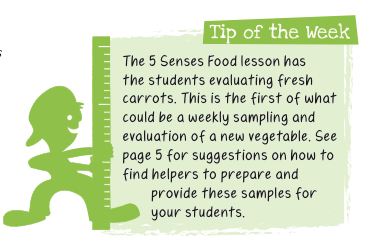
Know and Show Sombrero
Classroom project-able: PLANTS
5 Senses Food
Classroom project-able: I Love Strawberries
Classroom project-able: Sight, Smell, Touch, Sound, Taste


Plant Parts We Eat
Classroom project-able: Roots, Stems, Leaves, Flowers, Fruit, Seeds
Plant part vegetable web links: resource 1
Service Learning Project: Plant Parts Canned Food Drive
Nutrients to Grow
Featured literature connection: Two Old Potatoes & Me


Don’t Crowd Me
Find your County Extension office to for about local vegetable planting dates.
Paper Towel Gardening


Home Sweet Home
Featured literature connection: A Place to Grow
Purchase a complete set of all featured LGEG books here.
Balloon Hot Potato




Veggie Research and Garden Graffiti
Go, Slow, Whoa Classification
Classroom project-able: Go, Slow, Whoa Definitions
U R What U Eat
Biggie Cheesy Kids Meal

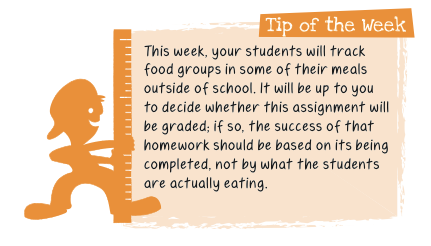

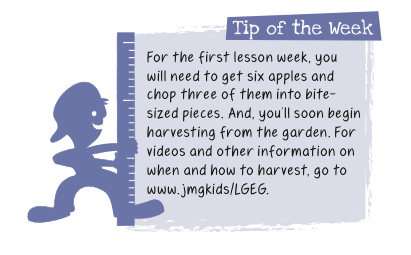
Fruity Beauty and Blind Taste Test
Classroom project-ables: Apples Whole, Apples Cut
The Tasty Unknown Food Chain
Fruity Beauty Blind Test Worksheet
Featured literature connection: The Ugly Vegetables

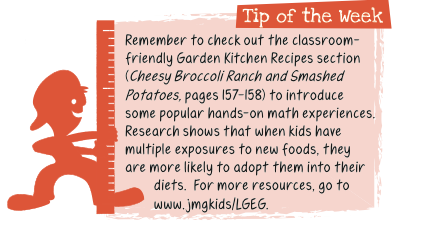
Research: More exposure to new foods the more likely people are to adopt those foods in their diet (coming soon)
Growing New from Old
Classroom project-able: Potato Geography
Link to tips on how to grow bumper crop of potatoes:
In the Home Garden, Growing Potatoes, Growing Potatoes in Home Gardens
Classroom project-able: How to Plant Potatoes
Find your County Extension office to learn about local vegetable planting dates.
Featured literature connection: Two Old Potatoes
Purchase a complete set of all featured LGEG books here.
Research
More exposure to new foods the more likely people are to adopt those foods in their diet
Greasy Grid Evaluation

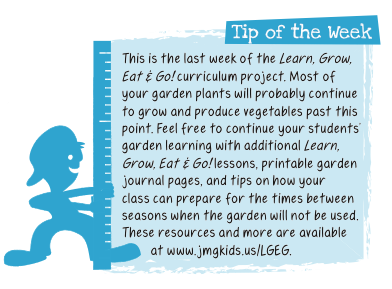
Planning for the off season? You might Solarize Your Garden
Kitchen Cotton Conversion
Classroom project-able: Conversion Chart
Menu Mind Makeover
Hunger Relief Organizations: Feeding America, USDA Supported Organizations, Plant a Row for the Hungry
Featured literature connection: I Will Never Eat A Tomato
Plant Parts Web, La Red de las Partes de la Planta
Home Sweet Home, Hogar Dulce Hogar
MyPlate Debate Cards, Tarjetas del Gran Debate de MiPlato
Choose MyPlate, Escoge MiPlato
10 in 2 Color Box, Caja de Colores 10 en 2
Dinner Tracker, Rastreador de Cenas
Fruity Beauty & Blind Taste Test, Frutita Bonita & Pruebas de Sabor a Ciegas
Greasy Grid Evaluation, Cuadrícula de la Evaluación Grasienta
Perfect Portion Scavenger Hunt, Búsqueda de Tesoros de la Porción Perfecta
Cinnamon Carrot Crunch, Crocante de Canela y Zanahoria
Red Leaf Lettuce Salad, Ensalada de Lechuga de Hoja Roja
Spinach Quesadillas, Quesadillas de Espinaca
Bok Choy Noodle Crisp, Tallarines Crujientes con Col China
Garden Skillet Sizzle, Sarten de Vegetales Humeantes
Mint Sugar Snap Peas, Arvejas Chinas con Menta
Grape Tomato and Cilantro Salad, Ensalada de Tomate de Uva y Cilantro
Easy Cauliflower & Broccoli, Coliflor y Brocoli Facil
Sunflower Spinach Salad, Ensalada Poderosa de Girasol, Espinaca y Acelga
Cheesy Broccoli and Grape Tomatoes, Pure de Papas y Brocoli con Queso
Plant Parts Canned Food Drive Resource Kit
Grow & Give Project – Plant a Row for the Hungry, Feeding America, No Kid Hungry, & Find Your Local Food Bank
Sample Volunteer Schedule (PDF)
Sample Volunteer Schedule (editable Word doc)




